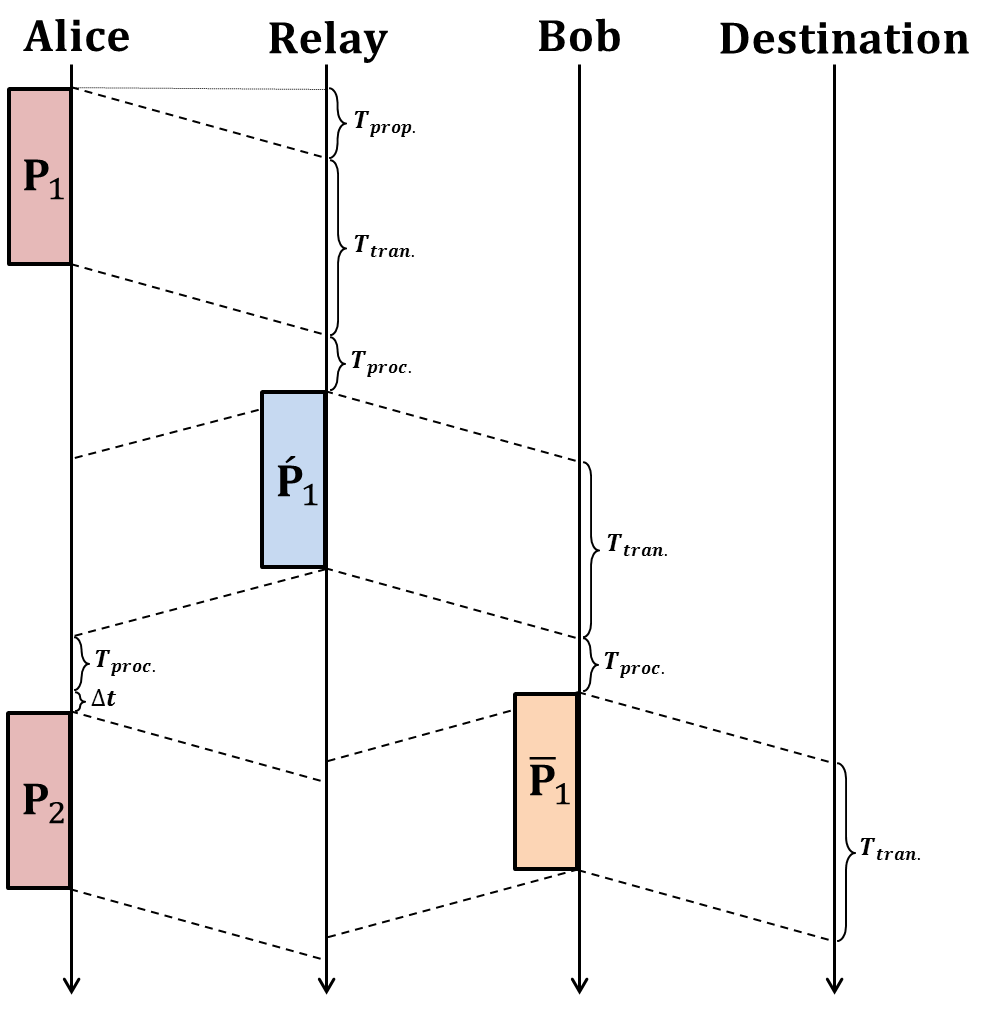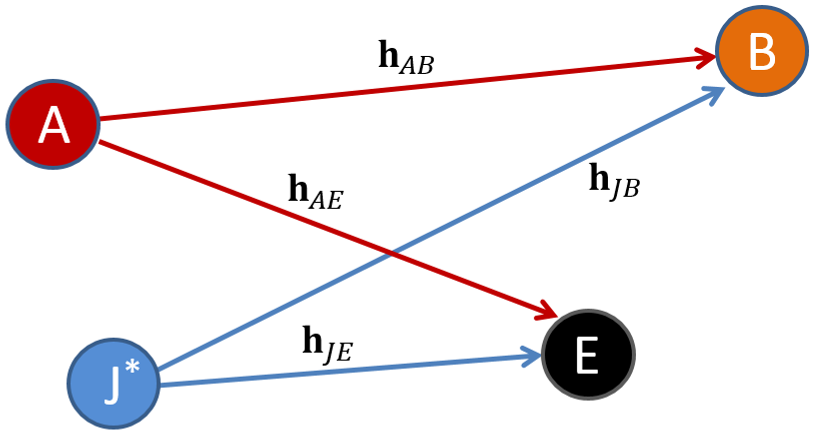Analog Network Coding in Underwater Acoustic Sensor Networks
The performance of multi-hop underwater acoustic network is known to be limited by the long propagation delays and by the limited bandwidth of the underwater acoustic (UW-A) channel.
Recent work on analog network coding (ANC) has shown that significant throughput gains can be achieved in multi-hop wireless networks. However, implementing ANC for UW-A communications is very challenging as the UW-A channel is severely affected by multipath.
In the first part of this project, we proposed CE-CDMA, a collision-enabling direct-sequence code-division multiple-access scheme for multi-hop underwater acoustic sensor networks.
In CE-CDMA two nodes, separated by two hops, are assigned the same code-division channel (i.e., spreading code) to communicate concurrently. The transmission of packets by the two nodes will therefore collide at the intermediate (relay) node.
We showed that by exploiting a priori information, i.e., the interfered packet previously received from one of the nodes, and an adaptive RAKE receiver that jointly estimates the two multipath-affected channels, the relay node can cancel the interference
before decoding the packet of interest. Our experiments demonstrate that for a 1-2dB tradeoff in signal-to-noise ratio (SNR) the proposed scheme can potentially improve the channel utilization of a unidirectional multi-hop linear network by up to 50%.
We also outlined the basic functionalities of a MAC protocol (CE-MAC) designed to support the proposed scheme.
 |
 |
In the second part of the project, we proposed a new secure underwater acoustic communication scheme designed to let a user (Alice) transmit a confidential message to another user (Bob) in the presence of
an eavesdropper (Eve). A typical approach in conventional wireless physical-layer security is to rely on a friendly jammer to jam Eve through artificial noise (AN). Instead, for the first time, we proposed a secure underwater communication scheme JANC
(Jamming through ANC) that relies on cooperative friendly jamming through CDMA-based analog network coding (ANC). The friendly cooperative jammer transmits information using the same spreading code used in the legitimate Alice-Bob link.
The information transmitted by the cooperative jammer is known a priori to Bob, but not to Eve. Although the jammer's packet will also interfere at Bob, we show that after jointly estimating the two multipathaffected channels, Bob can suppress the
interfering packet and decode Alice's packet, while Eve cannot. Experiments and simulations demonstrate that, for a given energy budget, the proposed scheme can guarantee much higher bit error rate (BER) at Eve, while creating minimal BER disturbance at
Bob, compared to the AN-aided approach.
This project is part of the Underwater Networking research lead by Prof. Tommaso Melodia.
